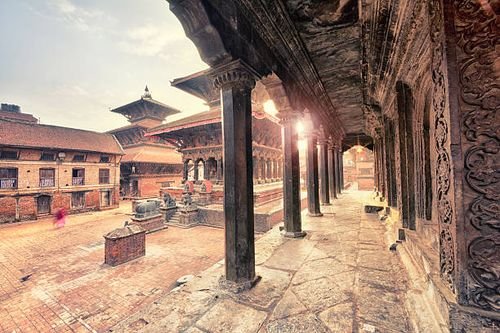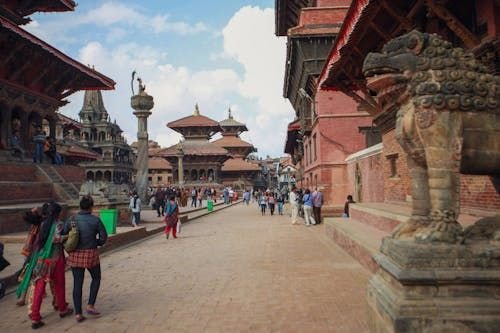Patan, Gujarat stands as one of Western India’s most historically rich and culturally vibrant cities, renowned for its ancient architecture, textile traditions, and spiritual heritage. Nestled in northern Gujarat, Patan was once the capital of powerful dynasties, shaping its legacy as a center of trade, learning, and craftsmanship.
Location and Accessibility
It is located in northern Gujarat, India, at latitude 23.849325° N and longitude 72.126625° E. The city sits between the Aravalli Range and the Little Rann of Kutch, serving as the administrative seat of Patan district. Well-connected by road and rail, it is approximately 130 km northwest of Ahmedabad and is accessible via state highways and regular bus services.
Key Details:
Historical Legacy
Patan’s story dates back to the 8th century, founded by Vanraj Chavda, the first Chavda dynasty ruler, who named it Anhilpur Patan after his close friend Anhil. It served as the capital of Gujarat for nearly 650 years, under the rule of the Chavdas, Solankis, and Vaghelas. As a hub of Jainism and Hinduism, the city flourished, especially under Solanki rule when grand temples and civic buildings sprang up across the city.
- It was once among the world’s largest cities, with a vibrant population and bustling trade markets in the medieval era.
- The city endured invasions and destruction by the Delhi Sultanate in the 13th century but was later rebuilt, maintaining its architectural grandeur and spiritual significance.
Cultural Heritage
Patan’s cultural heritage reflects centuries of coexistence among Jain, Hindu, and Muslim communities. It is famous for more than 100 temples, including grand Jain temples like Panchasara Parshwanath, which is the site of an ancient idol brought from Panchasar village. Legendary scholars such as Hemachandra, a Jain Acharya, contributed to literature and philosophy from Patan’s scholarly circles.
- Colorful festivals, traditional crafts, and community practices are central to Patan’s daily life.
- Patan is renowned for Patola sarees, handwoven double-ikat textiles that have become symbols of Gujarat’s cultural pride.
Tourist Attractions
It offers a myriad of treasures for history enthusiasts, art lovers, and spiritual seekers.
Rani ki Vav
- A UNESCO World Heritage Site, this stepwell was built by Queen Udayamati in the 11th century in honor of King Bhimdev I.
- Showcasing Maru-Gurjara architecture, it features tiered steps and incredibly detailed sculptures of Hindu deities.
- Once a social hub and water management marvel, today it amazes visitors with its intricacy and scale.
Patola Saree Workshops
- The city is globally celebrated for its Patola sarees, woven by Salvi artisans using a centuries-old double-ikat method.
- Patan Patola Heritage showcases the weaving process, and sarees are considered cultural heirlooms.
Ancient Jain and Hindu Temples
- Panchasara Jain Temple, Parsvnath Temple, and Rudra Mahalay Temple are significant pilgrimage sites.
- Explore Hemachandracharya Jain Gnan Library, which houses rare manuscripts.
Sahastralinga Talav
Modhera Sun Temple
- Though situated a short drive outside Patan, the Modhera Sun Temple is a magnificent 11th-century monument dedicated to the Sun God.
Historic Fortifications and Street Markets
- Remnants of the old fort and city gates, vibrant marketplaces, and traditional wooden houses characterize the local landscape.

Economy and Revenue
Traditionally, Patan’s economy was agrarian, with farming and animal husbandry dominating revenue generation. Over recent decades, the district’s economic profile has diversified:
- Agriculture and food processing remain the backbone of local employment, producing wheat, pulses, and cotton.
- Textile industries, fueled by Patola saree production, have become lucrative, contributing substantially to tourism and exports.
- Recent investments in oil, gas, and agro-based industries, as well as improved infrastructure (roads, natural gas supply), have accelerated industrial growth.
- Tourism is an emerging revenue source, attracting visitors to heritage sites and craft centers.
Route and Travel Guide
To reach Patan:
- By Air: The nearest airport is in Ahmedabad, about 130 km away. From Ahmedabad, frequent taxis and buses connect travelers to Patan.
- By Rail: Patan is served by Patan Railway Station, with trains from major Gujarat cities.
- By Road: State highways link Patan to Ahmedabad, Mehsana, and Sidhpur. Self-drive, taxi, and bus options are widely available.
FAQs About Patan, Gujarat
What is Patan famous for?
It is renowned for its ancient stepwell Rani ki Vav (a UNESCO World Heritage Site), Patola sarees, and its status as a historic capital of medieval Gujarat.
How old is Patan?
Founded in the 8th century by Vanraj Chavda, Patan has over 1200 years of documented history.
What is the cultural significance of Patola sarees?
Patola sarees represent Gujarat’s artistic excellence, employing a rare double-ikat weaving technique and vibrant geometric patterns. A single saree can take months to craft and is considered an heirloom.
Which are the must-visit tourist attractions in Patan?
The top sites include Rani ki Vav, Panchasara Jain Temple, Sahastralinga Talav, Patola Saree workshops, and nearby Modhera Sun Temple.
What is the best time to visit Patan?
The pleasant winter months from November to February are best for sightseeing. Summer months can be quite hot, limiting outdoor activities.
Which industries drive Patan’s economy?
Farming, agro-processing, Patola textiles, paper and pulp industries, and tourism are the primary economic drivers.
How do visitors reach Patan from Ahmedabad?
Regular train and bus services operate from Ahmedabad. Taxi and self-drive options are also available, covering about 130 km of well-maintained roads.
What is the historic importance of Jain temples in Patan?
It has over 100 Jain temples and was a major pilgrimage hub during medieval times, contributing significantly to Gujarat’s spiritual and architectural legacy.
The Living Spirit of Patan
Patan transcends its stone monuments and ancient streets, remaining a vibrant tapestry of traditions, artistry, and community. Centuries of history echo in its stepwells, temples, and lanes, while its weavers and scholars ensure the city’s legacy thrives into the future. Whether exploring UNESCO-listed wonders or engaging with local artisans, it offers a window into Gujarat’s undying spirit and heritage.
